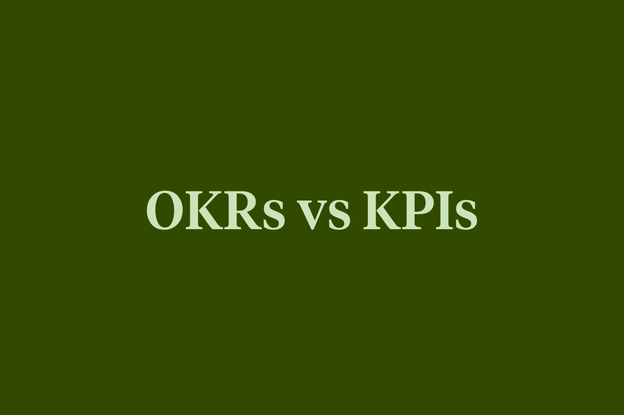What is a good employee survey response rate?

Survey response rates (or participation rates, as we call them) are often a measure of engagement. In other words, they are a measure of how engaged employees are with the survey and feedback process.
At Culture Amp, we have also done some analyses and found a moderate relationship between participation rates and employee engagement levels. However, the relationship is nowhere near perfect, and there does appear to be a trade-off effect above the 85-90% mark.
Is 100% participation in a staff survey good?
Despite how it may sound, a 100% participation rate in an employee survey isn’t always a good sign. As a matter of fact, we recently realized that one of the companies with the lowest engagement scores (in the last 12 months) in our platform had a 100% participation rate.
In fact, a 100% participation rate can often be a bad sign, as it's usually accompanied by comments about coercion, a large number of missing responses, and/or unmeaningful responses (e.g., all “strongly agree” or “strongly disagree”). In that sense, having a 100% response rate is sometimes associated with poorer quality data – and it is the quality of data that we should be focused on, not the quantity.
In employee surveys, we are not trying to generalize from a relatively small sample to a much larger population like we often are in customer or political research. We are trying to get a representative percentage of the whole population to respond so that we can get an accurate measure of overall employee sentiment.
For that reason, employee surveys tend to aim for participation rates well above 50% (the rate achieved in US elections). Generally, participation rates for staff surveys fall between the 65-85% range. These are rates that political scientists and market researchers can only dream of.
So, what is a good participation rate?
In small companies or teams (less than 50), we should be aiming a little higher than the 65-85% range. At Culture Amp, we usually recommend an 80-90% rate to be a good minimum benchmark, as it allows us to hear from 4 out of 5 people on average.
As we move to larger companies, we can scale our expectations down – with 500 employees, we will probably get a good sense of where the company is with a 70% rate of participation, so 70-80% is a good benchmark.
Companies of 1000+ can probably aim for a participation rate of around 65% as their lower bound – even though higher rates allow a stronger sense of involvement psychologically.
| Company size | Ideal survey participation rate |
|---|---|
| <50 | 80-90% |
| 500+ | 70-80% |
| 1000+ | 65-80% |
Of course, there may be reasons or situations in which it is difficult to achieve the above survey participation rates. In any case, it’s still possible to get a good statistical estimate from smaller samples in larger companies.
How to increase employee survey participation rates
Below, we’ve compiled a list of tips and ideas for improving your staff survey response rates. If you’re struggling to get your employees to participate, try out some (or all!) of the following:
- Have a survey communication framework in place. How you communicate each survey to your employees is critical to achieving high participation rates. For example, you need to communicate what the survey will measure, why the survey is important for the organization, what employees can expect throughout the process and more.
- Communicate the results of the survey quickly. When you share survey results quickly and openly, you are demonstrating to employees that the organization prioritizes the survey and the feedback that people are sharing with them.
- Take action off the back of the survey. As our CEO, Didier Elzinga, wrote, “People don’t get survey fatigue; they get lack-of-action fatigue.” Employees want to know that sharing feedback will lead to real, practical changes. Otherwise, what’s the point of spending time and energy to take the survey in the first place? When an organization consistently demonstrates that they’re committed to taking action, employees who didn’t respond to the previous survey might just be ready to join next time.
-
Emphasize confidentiality and data security in the survey process. For people to feel comfortable sharing honest feedback, they must trust that their responses will be confidential. They must trust that their data will be handled responsibly and that their managers will be unable to see what they’re saying.
When administering a survey, you can increase participation rates by explicitly sharing with participants what level of results people will be able to see in the survey system. It’s important to note that this isn't possible in every software solution or platform, though tools like Culture Amp do offer that capability. -
Get management on the same page. Managers are a great resource for improving employee survey participation rates. Andrea Reyes, Director of Field Training at Journeys, found that opening up live participation results for managers made an impact. "Doing so helped leaders to encourage their team to participate, and it did lead to an increase in participation for us," she says.
The same is true at Vend, an organization that generally experiences participation rates above 90% on their engagement surveys. There is a high level of buy-in on the feedback process from managers, who are always happy to increase their team’s participation. - Offer team/department incentives. There are many ways to promote your survey, and team incentives are one great way you can encourage greater participation. For example, you can offer teams with a 100% participation rate a gift card or a fun team bonding experience, like rock climbing. You can also put up a leaderboard so that people know which teams or departments are leading the way.
-
![Graphic text reading "Communicating your next employee engagement survey"]()
Article
Communicating your next employee engagement survey
Learn how to set up an effective framework for communicating your survey – from pre-launch to post-survey.
Why survey design matters
If one of your goals is to increase your employee survey participation rate, consider the following survey design factors:
- Survey user experience (UX). If your survey is easy to take, more people will take it - simple. A good way to improve the UX of your survey is to pick and choose the right rating scale.
- Survey length. Employees are taking time out of their busy days to share their feedback with you, so you want to make sure that the survey is the optimal length to get the helpful feedback you need to make good decisions – but not so long that it becomes time-consuming to take.
Generally, we recommend that surveys take 10 minutes or less and cover no more than 50-60 rating questions (i.e., picking between “strongly agree” and “strongly disagree”). Along the same lines, you should limit the number of free-text questions. If you want to open up the opportunity for greater feedback, you can give employees the option to add survey comments if they want to offer any context or explanation for their rating.
Improving employee survey participation
Although 100% participation isn't necessary, a high participation rate is vital for ensuring that results truly represent a given team, department, or organization. More responses also provide more data and insights that your organization can use to drive meaningful outcomes to engagement, performance, retention, and more.

Ready to take your surveys to the next level?
Request a demo of our Employee Engagement Platform for ready-to-use surveys, organizational insights, and more.








